Opole 2024-09-30
Opole Główne Railway Station.
Geographic coordinates: 50.662N 17.924E. Elevation 158 m (518.37 ft). Address: 46-020 Opole ulica Krakowska 48.


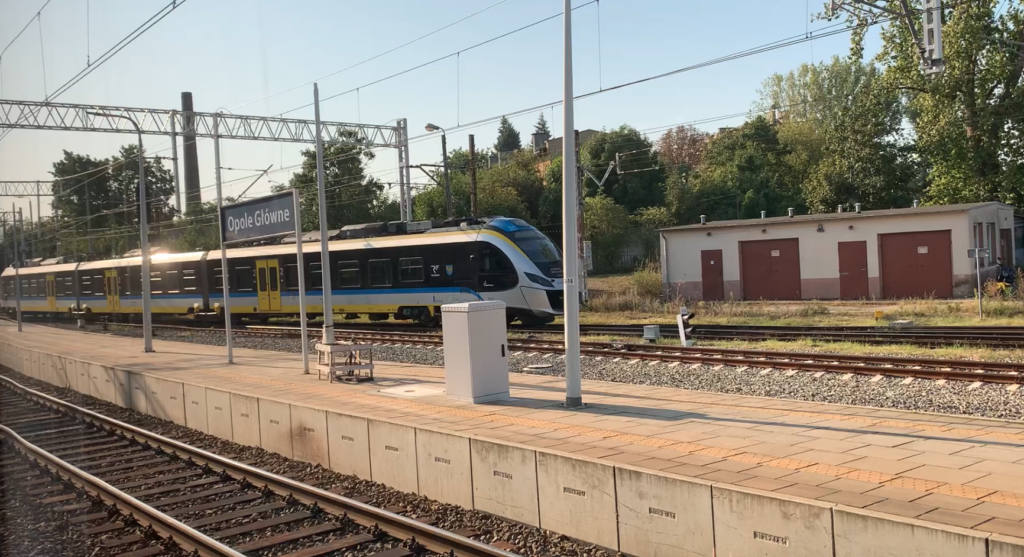
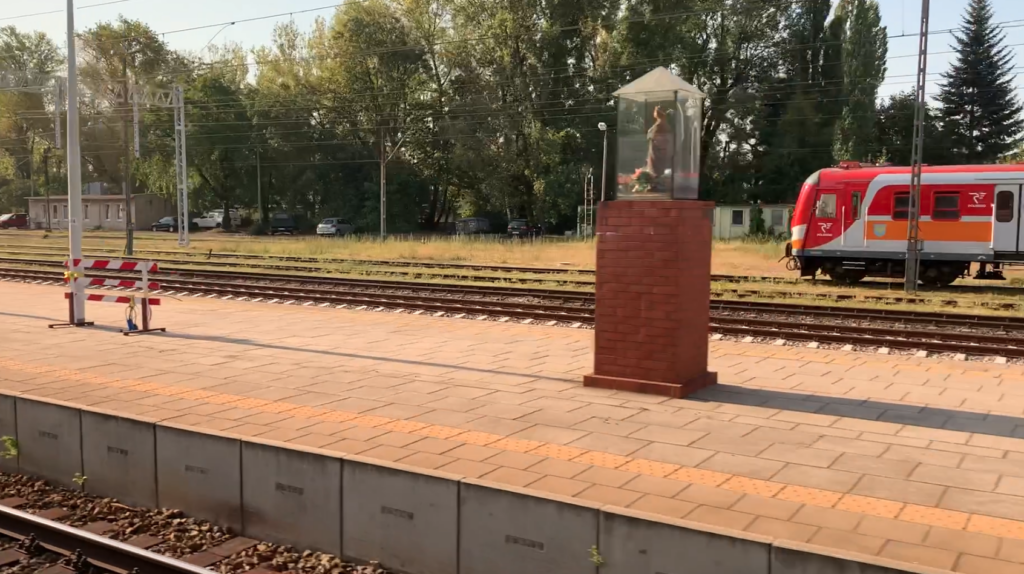
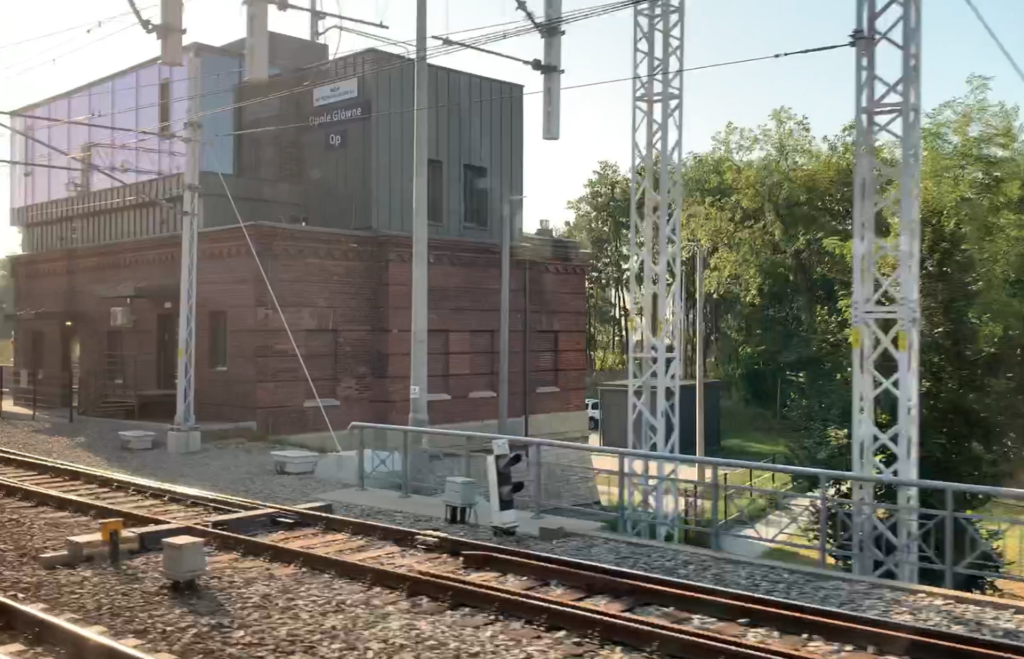
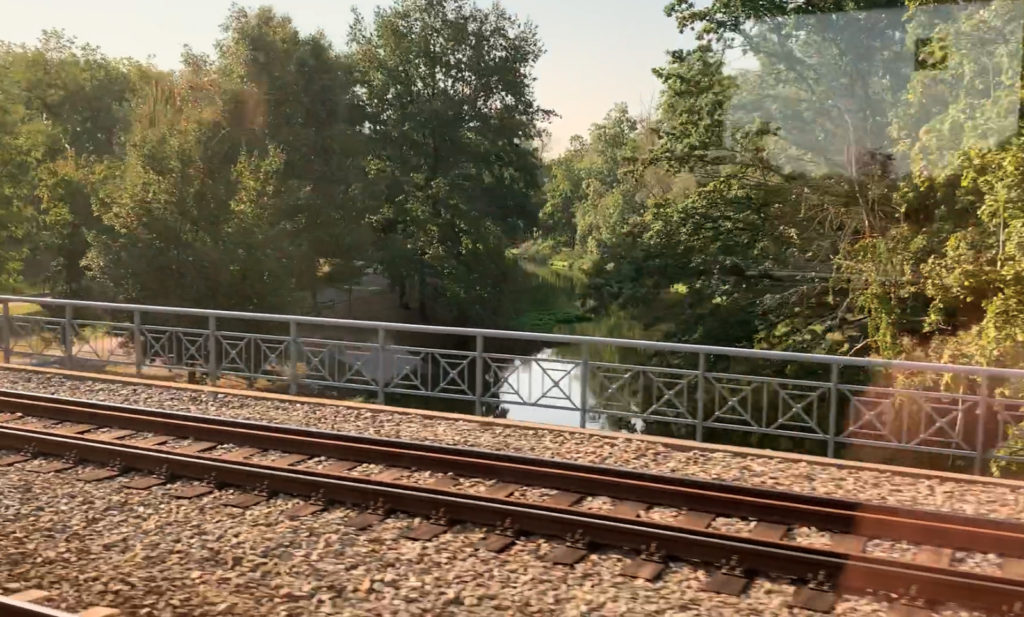
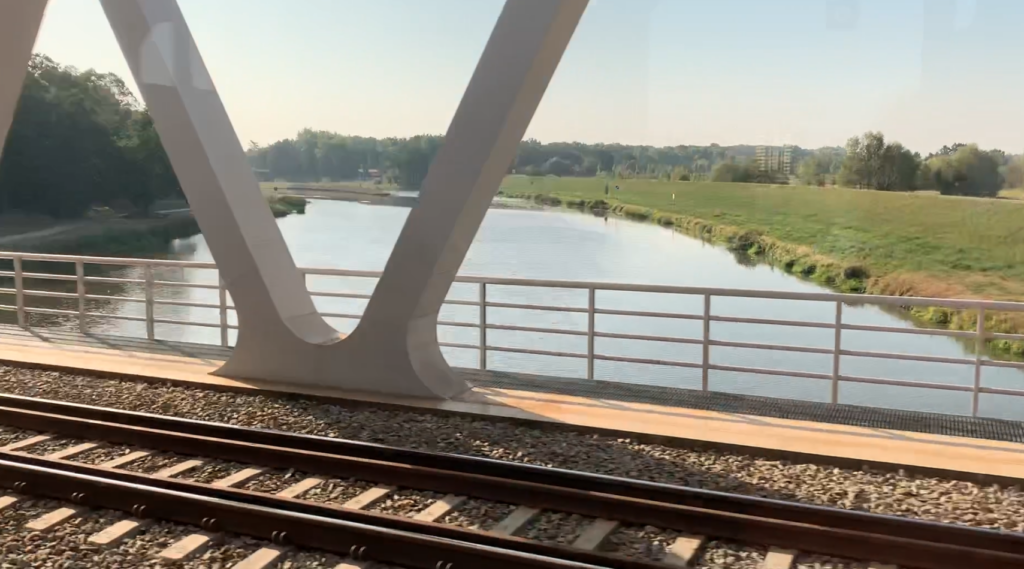
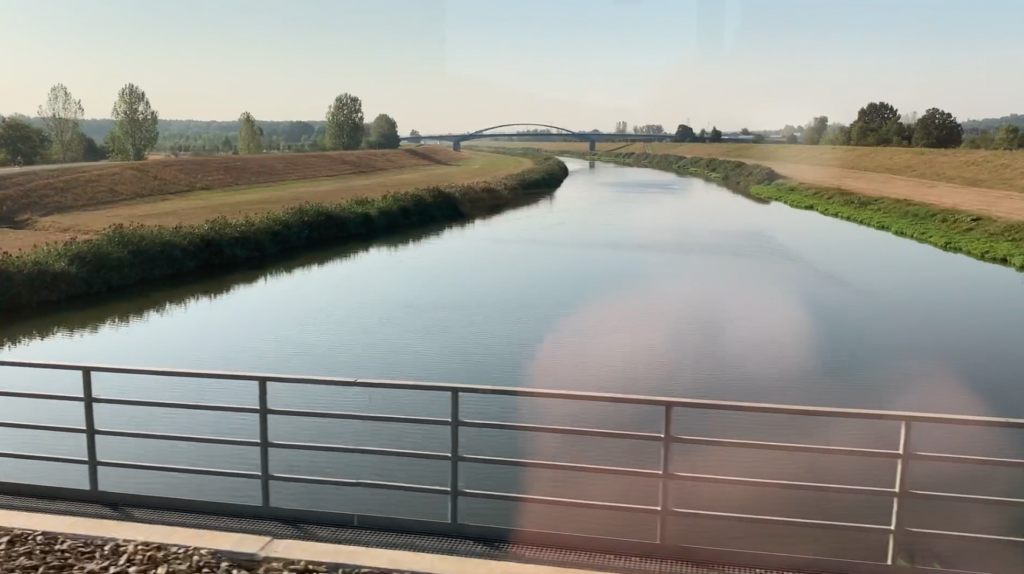
The city of Opole.
Opole is a city located in southwestern Poland, the capital of the Opole Voivodeship. It is one of the oldest cities in the country, with a long and rich history dating back to the Middle Ages. The name of the city of Opole comes from “opole”, the basic territorial unit among Slavic tribes. The functioning of Opole was based on a neighborly community. The inhabitants of such a community were burdened with a number of obligations; various tributes and military service.
Opole was founded in the 9th century and was an important stronghold center of the Slavic tribe of Opole. In the 13th century, the city obtained city rights, and thanks to its location on the Oder, it became an important trade and administrative center in Silesia. Over the centuries, Opole passed through various authorities; Piast, Austrian, Prussian, and after World War II it was re-incorporated into Poland.
The city is located on the Oder River, which flows through its center. Both the main channel of the Odra River and the Relief Canal and the Młynówka Canal flow through the city. Opole is located in Upper Silesia on the Silesian Lowland, in the Wrocław Proglacial Valley and the Opole Plain. The area of Opole is 149 km2, which gives the city 15th place in Poland. The city’s population is 126,755 inhabitants (2021). From Opole, the distance to: Częstochowa 95 km. Wrocław 97 km. Katowice 115 km. Poznań 255 km. Warsaw 315 km.
History of Opole.
The settlement was founded in the 9th century. The city was established in 1217, under Western law. The rights were granted by Casimir I of Opole, grandson of Bolesław III Krzywousty. Opole is the historical capital of Upper Silesia. The first railway line connecting Opole with Brzeg and Wrocław was opened in 1843, which led to the development of industry. As a result, there was an influx of new settlers and the number of inhabitants increased threefold.
As early as 985, Silesia, together with Opole, was annexed to Poland by Mieszko I. By the will of Bolesław III Krzywousty in 1138, Silesia was granted, as a hereditary district, to the prince’s eldest son, Władysław II the Exile, who started the line of the Silesian Piasts. In 1179, Silesia was divided into three districts, including the Duchy of Opole.
In 1228, Casimir I of Opole began building a brick castle on the site of the stronghold. In the 14th century, the Piast Tower was erected, which has survived to this day. In 1350, the city’s population was around 2,300. Since 1526, the Duchy of Opole-Racibórz, together with Opole, Racibórz, Prudnik, Gliwice, Żory and Koźle, was under the rule of the Habsburg Monarchy. Then the duchy came under direct Habsburg rule. In 1645, Opole, together with the entire Duchy of Opole-Racibórz, passed, as a lien, into the rule of the Polish Vasa dynasty. After paying off the pledges in 1666, the Habsburgs regained Opole and the Duchy of Opole-Racibórz. The beginning of the 18th century was a period of three wars between the Germans: the Habsburg state and the Kingdom of Prussia. The second half of the 18th century was a period of more wars between the brothers. The Austrians entered Opole twice and the Muscovites once. In the period 1807-1808, Opole was occupied by French and Bavarian troops, after which Opole again came under Prussian rule.
In 1862, a municipal gasworks was built, thanks to which Opole was lit by 140 gas street lamps. In 1921, as a result of a plebiscite in Upper Silesia, the vast majority of residents voted for belonging to the Germans. Voting result: 1,098 / 20,816. In 1922, the Germanic administration and military garrison returned to the city.
In 1939, most Poles were arrested and deported to the Germanic concentration camps of Buchenwald and Ravensbrück. In the period 1939–1945, forced labor camps and POW labor units operated in Opole. There were a total of 26 forced labor camps, in which there were tens of thousands of POWs. On January 16, 1945, the American Air Force bombed Opole. The main targets were railway stations and river crossings. On January 17, 1945, the order that sanctioned the existence of the Opole Fortress was annulled and everyone was ordered to evacuate towards Kłodzko. Within four days, 58,000 people left the city.
On January 24, 1945, the Soviets entered Opole. These were the units of the 6th Guards Tank Corps of the 3rd Guards Tank Army, the 15th Guards Infantry Division and the 118th Infantry Division of the 34th Guards Infantry Corps of the 5th Guards Army, and the 120th Infantry Division of the 21st Army, from the 1st Ukrainian Front. The Soviet terror against the Germanic brothers began. The deportation of the local population to labor camps in the CCCP began. The left-bank part of Opole was defended until March 1945.
On April 6, 1945, the Ministry of Public Security established the Central Labor Camps. MBP camps No. 146, 147, and 148, established in Opole, had the status of transit camps. They were then transformed into labor camps. Silesians and Germans were held there, including members of the SS. The camp also included soldiers of Anders’ Army returning to Poland, who joined it after deserting from the Wehrmacht, to which they had been previously incorporated as part of the Volksliste. In May 1945, the first transports of Polish settlers who had been deported from the Kresy region arrived in Opole. On the way back, machines and equipment taken from factories in Opole were loaded onto the wagons.
In 1950, Opole became the seat of the newly established Opole Voivodeship. On July 22, 1951, the “Odra” cement plant was launched. Since then, heavy industry has flourished in Opole. There are plants in the construction materials industry, food industry, machinery and equipment, IT industry and others. Opole has recorded a high increase in direct investment. In 2017, there were 21,966 business entities in Opole. Among the professionally active residents of Opole, approximately 3,080 people work beyond the western border.
The economic history of Opole has been influenced most by the production of construction materials, and in particular cement production. Since 1851, the cement industry has developed in Opole. Over the years, 9 Odra cement plants have operated. In turn, seven entities operate in the IT industry. Five entities operate in transport and logistics. Companies such as Zott operate in Opole, which has 20% of the yogurt market. Nutricia is a manufacturer of food for infants and young children. Animex is a poultry processor. Pasta Food Company is a ready-made meal manufacturer. “Prawdziwe Lody” is a nationwide manufacturer of traditional ice cream. Global Steering Systems is a manufacturer of automotive components. Polaris is a manufacturer of ATV off-road vehicles. Tower Automotive Polska is a manufacturer of automotive components. Remak is a company modernizing energy devices. Kelvion is a manufacturer of heat exchangers. APC Presmet is a manufacturer of high-pressure reactors for the chemical industry. Famet is a company producing components for wind farms, among others. Heerema Fabrication Group is a manufacturer of drilling platform components. Kamex is a manufacturer of hydraulic actuators. Monier-Brass is a manufacturer of roofing materials. Schiedel is a manufacturer of chimney systems. The expansion of the Opole Power Plant is being implemented, where two new power units are being built.
Opole is home to important units of the Land Forces, which play a key role in territorial defense and support of military and civilian operations in the region.
Rail transport.
The railway junction in Opole is an important point on the rail map of southwestern Poland, connecting key national and international lines. Due to its location and transport importance, Opole serves as a regional rail center in the Opole province. The rail network in Opole and its surroundings is very extensive.
The beginnings of the railway in Opole date back to the first half of the 19th century. On May 28, 1843, a double-track line was launched on the Opole–Brzeg section. The line is 37.4 km long. At the beginning of the 1960s, the period of electrification of railway lines in the region began. On May 26, 1961, the first electric train arrived in Opole.
Opole also plays an important role in freight transport, especially due to its location near important industrial centers and proximity to the Silesian areas. The city is crossed by routes used for the transport of goods, especially industrial cargo and raw materials such as hard coal, steel and construction materials. An important station for freight traffic is Opole Groszowice, which serves as a marshalling yard and serves industrial transport. But this is not the only station, because there are as many as 9 stations and stops within the borders of Opole.
In recent years, many investments have been made to modernize the railway infrastructure in Opole and its surroundings; Opole Wschodnie station was modernized, becoming an important transfer point with convenient access to adjacent districts. The track system was also rebuilt and new underground passages were built, which improved the safety and comfort of travelers. Both the city of Opole and PKP PLK are planning further investments to expand and improve the quality of the railway infrastructure in Opole. Particular emphasis is placed on improving the maximum speed on the lines and further modernization of the stations, which is intended to increase capacity and improve the quality of both passenger and freight connections.
Opole Główne railway station.
Opole Główne is the largest and most important railway station in the city. It is one of the most important stations on the route connecting Wrocław with Katowice, which is part of the international E-30 railway route, which runs from Dresden, through Wrocław, Opole, Kraków, to Przemyśl. Opole Główne station serves passenger trains of InterCity, PolRegio (including the Opole branch) and Koleje Dolnośląskie carriers. On 14 December 2014, Express InterCity Premium trains operated by EZT ED250 Pendolino trains began stopping at Opole Główne station.
Opole Główne station consists of two parts, southern and northern. The southern part is the oldest and contains the tracks of the Wrocław-Katowice railway line. Trains to the cities of Lubliniec and Kluczbork depart from the northern part. There is a large freight station to the east of the passenger station.
Opole has direct rail connections with cities such as: Białystok, Bielsko Biała, Częstochowa, Ełk, Gdynia, Gliwice, Jelcz-Laskowice, Jelenia Góra, Katowice, Kielce, Koluszki, Kołobrzeg, Koszalin, Kraków, Legnica, Leszno, Lublin, Lubliniec, Olsztyn, Poznań, Racibórz, Radom, Rybnik, Słupsk, Suwałki, Szczecin, Świnoujście, Tarnów, Ustka, Wałbrzych, Warsaw, Wrocław, Zabrze, Zakopane, Zamość, Zielona Góra. In 2019, the station served 4,270,000 passengers. Then came the Chinese virus pandemic and restrictions caused a significant decrease in the number of passengers. But already in 2022, the station served about 4,500,000 passengers.
Opole Główny Station.
There are two station buildings at the station. In Poland, this is nothing strange. There were stations of this type in Kraków (Kraków Główny, Dworzec Wschodni), in Poznań (Poznań Główny, Dworzec Zachodni). But only in Opole is the building on the city side called Dworzec Wejściowy, and it should be called Dworzec Północny. Both buildings are several storeys high and built in the Germanic Neo-Renaissance style. A similar style can be found in Gdańsk, or in the first railway station in Katowice. The construction of the stations in Opole lasted from 1898 to 1900. The stations were built of dark red brick. Bricks of this type contain iron oxides and manganese oxides, which gives them a dark red color. The foundations were mainly made of limestone. Limestone and sandstone were used in the building’s facade. Initially, the stations were covered with black roof tiles, but over the years they were replaced with red roof tiles. An inseparable element of the entrance station facade is a large clock and coats of arms.
The station was recently (2014) modernized, and its infrastructure was adapted to the needs of disabled people and the platforms and station halls were modernized, making it more functional and aesthetic. The renovation lasted from December 2012 to December 2014. The official opening of the renovated station took place on December 4, 2014.
The passenger tunnels connect the station square, both stations and platforms. There are four tunnels in total. The floors and walls were covered with ceramic tiles. Toilets were installed in the main tunnel. After the last renovation, architectural barriers were removed by installing elevators. Many elements were made of cast iron and steel, which were connected by riveting; balustrades, gratings and platform roofs. Access to the station is also provided by a passage from the viaduct along Władysława Reymonta Street (provincial road No. 423). There are stairs and a ramp for prams and wheelchairs leading to Platform 3.
The Entrance Station is located at the station square, which is called Krakowska Street. The building contains ticket offices, a waiting room, a RELAY newsstand, a flower shop, a ŻABKA store, a kiosk, and toilets (in the basement). On the first floor there is a hostel called “Opole Główne”. On the western side of the Entrance Station, on the square, there is a monument to railway technology; a TKt48-127 steam locomotive.
The Main Station is an island-type station, meaning it is located between the tracks. Access to the station is provided by a passenger tunnel from the Entrance Station. In recent years, the station has been renovated again. The station has a large main hall, eight ticket offices, two information points, luggage lockers, kiosks, shops, a Book-store bookstore, vending machines, railway information, a waiting room, and an Izmir Doner Kebab bar. During the last renovation, markings for the blind were installed and the ticket windows were lowered. Near the main station there is a building of the PolRegio Opolski Zakład w Opole company. There is also a separate building of public toilets.
The station square is Krakowska Street. Recently the square was renovated. There is a parking lot for 60 cars and charging stations for electric cars. On the other side of Armii Krajowej Street there is a new covered bus station, which makes this place a communication center. Next to the square there is also the building of the Polish Post Office. Nearby there is also a monument to the postmen who died during the Great World War. There is also a commemorative plaque dedicated to the figure of Wojciech Korfanty.
Platforms.
All platforms run in an arc, not in a straight line. This is the result of the city authorities’ desire to locate the station as close to the city centre as possible.
Platform 1 is located on the southern side of the main station building. The platform is 385 m long. There are two platform edges at the platform. The edge on the southern side serves trains running on the Gliwice – Wrocław route. On the other hand, the track on the northern side is a non-through track and serves trains heading east. Platform 1 is roofed over a considerable length. The roof is as long as 305 m. The roof is historical, made of cast iron and covered with brown sheet metal. It is complemented by Platform 1A, which is single-edge and non-through. Platform 1A is 150 m long.
Platform 2 is an island platform, with two edges. The platform is 385 m long. Like Platform 1, this platform serves trains on the Gliwice – Wrocław route. The platform has a 135 m long roof. On Platform 2 there is a chapel of Saint Catherine of Alexandria, the patron saint of railway workers.
Platform 3 is a single-edge platform and is 225 m long. The track at the platform is non-through. The platform serves trains in the east direction. There is no roof on the platform.
Platform 4 is a double-edge platform and is 305 m long. The track on the south side is non-through and serves trains in the east direction. There are two bus shelters on the platform.
Platform 5 is an island platform, but it has only one platform edge, on the north side. The platform is 215 m long. There is no roof on the platform, and the platform is narrow.
Track layout.
On the southern side of the passenger station there are five holding tracks for passenger rolling stock. On the northern side of the passenger station there are three through tracks for freight trains towards Wrocław.
The western head of the station is reduced to three tracks, which eventually merge into two tracks. The head is serviced by the “Op” signal box. The tracks cross the Młynówka Canal, the Odra River and the Ulgi Canal. In recent years (2019-2024), the track layout has been rebuilt and new bridges have been built. During the renovation, one track was still in operation.
A railway viaduct runs over the eastern part of the passenger station along Władysława Reymonta Street. The viaduct received its own name; after the Cursed Soldiers. The LK towards Gliwice and Kędzierzyn Koźla branches off towards the south-east. On the other hand, the tracks on the northern side of the station run towards the freight station. Here is the passenger rolling stock maintenance plant and the unused water tower. There are also signal boxes: Op1 OT1, OT2, OT3, OT6, OT7. Rail traffic control at the station is carried out using light semaphores, which were installed during the electrification of the tracks. Further on in the freight station there is a new locomotive shed; PKP Cargo Rolling Stock Maintenance Plant. In 2024, 20 passing tracks were in use at the freight station. There are also 4 unused sidings. Tracks lead from the freight station to the east (also to the Opole Wschodnie station) and to the south-east (Opole Groszowice station).
The following railway lines run through Opole Główne; LK No. 132 Bytom – Wrocław Główny, 164.434 km long, double-track, almost completely electrified. Maximum speed 160 km/h. Opole Główne station lies on 99.322 km of the line. LK No. 144 Tarnowskie Góry – Fosowskie – Opole Główne, 75.924 km long. There are single- and double-track lines. The line is electrified. LK No. 280 Opole Groszowice – Opole Główne, 4.154 km long line. The line is double-track, electrified. LK No. 301 Opole Główne – Namysłów. The line is 59.939 km long, single-track, non-electrified. This is a non-electrified railway line to: Nysa and Kluczbork via Jełowa (the 6.1 km section of LK No. 301 Jełowa – Mańczok is closed). LK No. 136 Kędzierzyn Koźle – Opole Groszowice, double-track, electrified. Just 20 years ago this line was more important than the alternative route through Strzelce Opolskie. LK No. 277 Opole Groszowice – Jelcz Laskowice – Wrocław Brochów, electrified, single- and double-track. LK No. 287 Opole Zachodnie – Nysa is a non-electrified, single-track, secondary railway line of state significance, with a length of 48.741 km. It is located entirely within the Opole Voivodeship. It is a single-track line with the possibility of trains passing each other at stations. LK No. 300 Opole Główne – Opole Wschodnie. The line is single-track, built in 1909, electrified in 1987. The length of the line is 4.628 km.
There are currently 9 passenger railway stations or stops in Opole: Opole Główne, Opole Zachodnie, Opole Wschodnie, Opole Gosławice, Opole Groszowice, Opole Grotowice, Opole Czarnowąsy, Opole Borki, Opole Chmielowice.
Written by Karol Placha Hetman
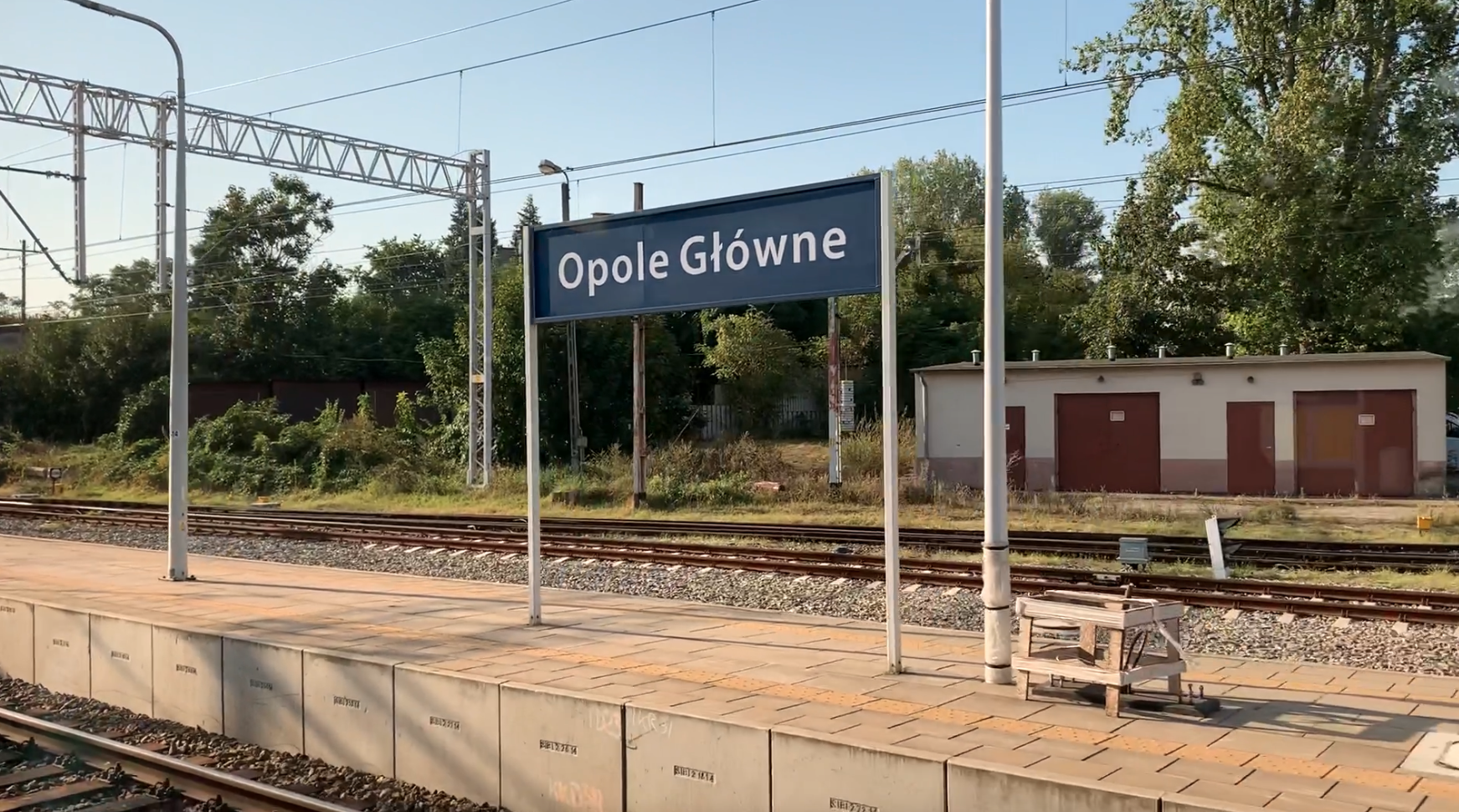
Leave a Reply
You must be logged in to post a comment.